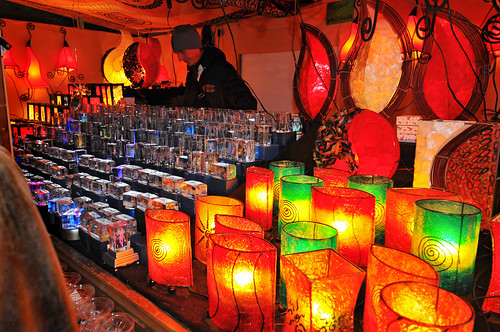
Light, colors and glass
Konstanz is a university town situated on the Rhine River and at the western end of Lake Constance, which is not too far from the Swiss border or the Swiss Alps. The city of Konstanz was the site of the Church Council from 1414-1418, a period during which religious reformer Jan Hus was excommunicated and burned at the stake. It is also the birthplace of Graf Zeppelin, the famous inventor of airships, which he regularly flew over Lake Constance as well as across the Atlantic.[1]
From the city’s majestic “Münster” Cathedral towers, beautiful views can be enjoyed all around. Below are the roof gardens of Niederburg in the city’s oldest and most charming district. Across are the clear-blue waters of Lake Constance, which stretches all the way to Meersburg. Above in the horizon are the Austrian and Swiss Alps, with Mount Säntis being the highest of the mountains.[2]
Attractions
Konstanz’s main attraction is its many old churches like the Münster Cathedral and its majestic towers. Several other churches can be found within the city, including three towers that have been left over from the original city wall. One of these towers marks the site of the former medieval bridge over the Rhine that gave Konstanz its past prominence.[3]
The other attraction of Konstanz is its lake. This 540 square kilometer lake shimmers with thick ice in the winter once every several decades – quite surprising considering the lake is amidst the sight of fruit orchards and vineyards that produce light, sweet wines during most winters. The last time the lake was frozen was in February 1963, an event that drew hundreds of thousands of visitors. A festival was held that year with people reveling in winter ice activities. Today, the lake carries ferries and sail boats.[4]
History
Konstanz’s history dates back to the late Stone Age, as traces of prehistoric remains have been found. The Romans settled on the site and built a fortified town. They were followed several centuries later by bishops and clerics, whose presence helped Konstanz become a leading spiritual center of Europe.[5]
In the Middle Ages, Konstanz prospered economically through trade, as it had the only bridge in the region that crossed the Rhine. Its linen became famous throughout the continent. This prosperity gave way to political and religious influence. It was in Konstanz where Jan Hus was burned at the stake and where the Great Schism was formally ended with the election of Pope Martin V.[6]
In the 16th century, Konstanz embraced the Protestant Reformation and forced the catholic bishops to move to neighboring Meersburg. In WWII, the city was left intact, escaping bombing by the Allied Forces. Konstanz cleverly left all of its lights on at night to fool the bombers into thinking it was part of Switzerland.[7]
References:
“Konstanz.” < http://en.wikipedia.org/wiki/Konstanz>
Kustos, Norbert, and Alice Loyson. Schönes Baden-Württemberg. Hamburg: Ellert & Richter Verlag, 1998. ISBN: 3892344523.
[1] Kustos, 30-31
[2] Id. at 31
[3] Konstanz
[4] Kustos, 30-31
[5] Konstanz
[6] Id.
[7] Id.


Comments